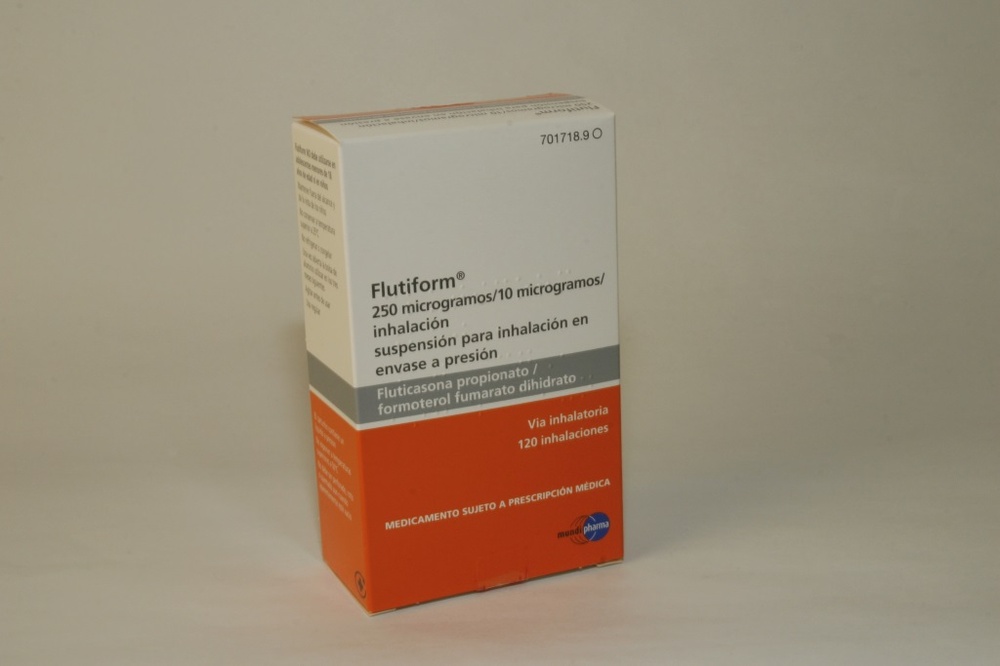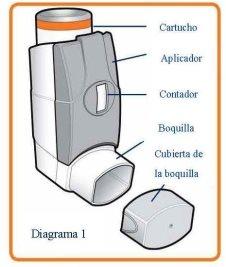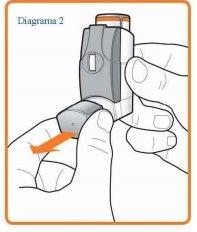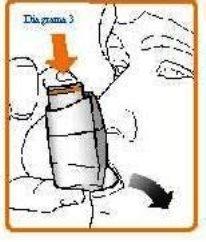

ФЛУТИФОРМ 250 микрограммов / 10 микрограммов СУСПЕНЗИЯ ДЛЯ ИНГАЛЯЦИЙ в баллончике под давлением

Спросите врача о рецепте на ФЛУТИФОРМ 250 микрограммов / 10 микрограммов СУСПЕНЗИЯ ДЛЯ ИНГАЛЯЦИЙ в баллончике под давлением

Инструкция по применению ФЛУТИФОРМ 250 микрограммов / 10 микрограммов СУСПЕНЗИЯ ДЛЯ ИНГАЛЯЦИЙ в баллончике под давлением
Введение
Инструкция: информация для пользователя
ФлутIFORM 250 микрограммов/10 микрограммов/ингаляция, суспензия для ингаляции в баллоне под давлением
Флутиказона пропионат/формотерол фумарат дигидрат
Прочитайте внимательно всю инструкцию перед началом использования этого лекарства,поскольку она содержит важную информацию для вас.
- Сохраните эту инструкцию, поскольку вам может потребоваться прочитать ее снова.
- Если у вас есть какие-либо вопросы, проконсультируйтесь с вашим врачом или фармацевтом или медсестрой.
- Это лекарство было назначено только вам и не должно быть передано другим людям, даже если они имеют те же симптомы, что и вы, поскольку оно может нанести им вред.
- Если вы испытываете побочные эффекты, проконсультируйтесь с вашим врачом или фармацевтом или медсестрой, даже если это побочные эффекты, которые не указаны в этой инструкции. См. раздел 4.
Содержание инструкции
- Что такое ФлутIFORM и для чего он используется
- Что вам нужно знать перед началом использования ФлутIFORM
- Как использовать ФлутIFORM
- Возможные побочные эффекты
- Хранение ФлутIFORM
- Содержание упаковки и дополнительная информация
1. Что такое ФлутIFORM и для чего он используется
Примечание:
Название лекарства - ФлутIFORM суспензия для ингаляции в баллоне под давлением, однако в этой инструкции оно часто сокращается до ФлутIFORM. Иногда делается ссылка на конкретную дозу.
ФлутIFORM - это ингалятор (суспензия для ингаляции в баллоне под давлением), содержащий два активных вещества:
- Флутиказона пропионат, который относится к группе лекарств, называемых стероидами. Стероиды помогают уменьшить отек и воспаление в легких.
- Формотерол фумарат дигидрат, который относится к группе лекарств, называемых бета2-агонистами длительного действия. Бета2-агонисты длительного действия - это бронходилататоры длительного действия, которые помогают giữать дыхательные пути в легких открытыми, облегчая дыхание.
Эти два активных вещества вместе помогают улучшить дыхание. Вы должны использовать это лекарство каждый день, следуя указаниям вашего врача.
Это лекарство помогает предотвратить респираторные проблемы, такие как астма, и помогает избежать одышки и затрудненного дыхания.Однако оно не работает, если у вас уже начался приступ астмы, то есть если вы уже задыхаетесь и имеете свистящее дыхание. Если это происходит, вам необходимо использовать лекарство "скорой помощи" быстрого действия, такое как сальбутамол.
2. Что вам нужно знать перед началом использования ФлутIFORM
Не используйте ФлутIFORM, если:
- вы аллергичны к флутиказоне пропионату, формотеролу фумарату или любому другому компоненту этого лекарства (указанному в разделе 6).
Предостережения и меры предосторожности
Проконсультируйтесь с вашим врачом, фармацевтом или медсестрой перед началом использования ФлутIFORM.
Перед началом лечения этим ингалятором сообщите вашему врачу или фармацевту или медсестре, если у вас:
- Туберкулез (ТБ) в настоящее время или если вы имели его в прошлом. Симптомы включают постоянный кашель, часто с кровянистой мокротой, лихорадку, усталость, потерю аппетита, потерю веса и ночные поты.
- Инфекция в легких или груди.
- Проблемы с сердцем, такие как проблемы с кровотоком к сердцу или сужение одной из сердечных клапан (клапана аорты), сердечная недостаточность, которая может вызвать затрудненное дыхание или отек лодыжек, патология, при которой сердечная мышца увеличена (гипертрофическая кардиомиопатия), нерегулярный сердечный ритм (аритмии) или если вам сказали, что ваш электрокардиограмма сердца аномальна (пролонгированный интервал QTc).
- Аномальное расширение стенки кровеносного сосуда (аневризма).
- Сахарный диабет.
- Высокое кровяное давление.
- Гиперактивность щитовидной железы, которая может вызвать увеличение аппетита, потерю веса или потоотделение (тиротоксикоз).
- Низкий уровень калия в крови, который может вызвать мышечную слабость, мышечные спазмы или аномальный сердечный ритм (гипокалиемия).
- Нарушение функции надпочечников (если надпочечники не функционируют правильно, у вас могут быть симптомы, такие как головные боли, слабость, усталость, боли в животе, потеря аппетита, потеря веса, головокружение, очень низкое кровяное давление, диарея, чувство недомогания или приступы) или опухоль надпочечников (феохромоцитома).
- Проблемы с печенью.
Свяжитесь с вашим врачом, если вы испытываете размытое зрение или другие нарушения зрения.
Если вы собираетесь пройти хирургическую операцию или находитесь в состоянии сильного стресса, сообщите об этом вашему врачу, поскольку вам может потребоваться дополнительное лечение стероидами для контроля астмы.
Другие лекарства и ФлутIFORM
Сообщите вашему врачу или фармацевту, если вы принимаете, недавно принимали или можете принимать любое другое лекарство, включая те, которые можно купить без рецепта. Если вы используете этот ингалятор с другими лекарствами, эффект этого ингалятора или другого лекарства может измениться.
Сообщите вашему врачу или фармацевту, если вы принимаете следующие лекарства:
- Лекарства, известные как бета-блокаторы (например, атенолол для лечения высокого кровяного давления, соталол для лечения нерегулярного сердечного ритма, метопролол для лечения быстрого сердечного ритма или тимолол в глазных каплях для лечения глаукомы).
- Другие лекарства, используемые для лечения астмы или респираторных расстройств (например, теофиллин или аминофиллин).
- Лекарства, содержащие адреналин или связанные с ним вещества (включая другие бета-агонисты, такие как сальбутамол, или бета-антагонисты, такие как атенолол, метопролол, пропранолол, тимолол). Не должны использоваться другие бета2-агонисты длительного действия вместе с этим ингалятором. Если ваша астма ухудшается между приемами ФлутIFORM, вы должны использовать свой ингалятор "скорой помощи" быстрого действия, чтобы получить немедленное облегчение.
- Лекарства для лечения аллергических реакций (антигистаминные препараты).
- Лекарства для лечения высокого кровяного давления или накопления жидкости путем увеличения количества мочи (диуретики).
- Лекарства, используемые для лечения сердечной недостаточности (например, дигоксин).
- Лекарства для лечения нерегулярного сердечного ритма (например, хинидин, дисопирамид, процаинамид).
- Лекарства для лечения симптомов депрессии или психических расстройств, таких как ингибиторы моноаминоксидазы (например, фенелзин и изокарбоксазид), трициклические антидепрессанты (например, амитриптилин и имипрамин), или если вы принимали какие-либо из этих типов лекарств в течение последних двух недель.
- Лекарства, используемые для лечения психических или психиатрических расстройств (фенотиазины или антипсихотические препараты).
- Другие лекарства, содержащие стероиды.
- Антигрибковые препараты (например, кетоконазол или итраконазол).
- Некоторые лекарства могут увеличить эффект ФлутIFORM, и ваш врач может захотеть внимательно следить за вами, если вы принимаете эти лекарства (включая некоторые лекарства для ВИЧ: ритонавир, атазанавир, индинавир, нельфинавир, саквинавир или кобицистат).
- Антибиотики (например, кларитромицин, телитромицин или фуразолидон).
- Лекарства для лечения болезни Паркинсона (леводопа).
- Лекарства для лечения низкой активности щитовидной железы (левотироксин).
- Лекарства для лечения болезни Ходжкина (прокарбазин).
- Лекарства для стимуляции родов (окситоцин).
Если вы собираетесь пройти операцию под общим наркозом, пожалуйста, сообщите вашему врачу в больнице, что вы используете этот ингалятор.
Беременность и лактация
Если вы беременны или кормите грудью, думаете, что могли стать беременными или планируете стать беременными, проконсультируйтесь с вашим врачом или фармацевтом перед использованием этого лекарства. Врач посоветует вам, следует ли использовать это лекарство.
Вождение и использование машин
Вряд ли это лекарство повлияет на вашу способность водить транспорт или использовать машины.
ФлутIFORM содержит этанол (алкоголь) и кромогликат натрия
Это лекарство содержит 2 мг алкоголя в каждой дозе (2 ингаляции). Количество в каждой дозе эквивалентно менее 1 мл пива или 1 мл вина. Небольшое количество алкоголя в этом лекарстве не имеет значимого эффекта. Оно также содержит очень небольшое количество кромогликата натрия, однако пациенты, которые в настоящее время принимают кромогликат (используемый для лечения астмы, аллергического ринита и аллергического конъюнктивита), должны продолжать принимать его как обычно.
3. Как использовать ФлутIFORM
Следуйте точно инструкциям по применению этого лекарства, указанным вашим врачом или фармацевтом. В случае сомнений проконсультируйтесь с вашим врачом или фармацевтом.
Вы должны использовать свой ингалятор регулярно, то есть две ингаляции (пульсации) утром и две ингаляции (пульсации) вечером каждый день, чтобы получить максимальную пользу от своего ингалятора, если только ваш врач не дал вам других указаний или не рекомендовал прекратить лечение. Не принимайте больше доз, чем назначено. Ваш врач может назначить вам этот ингалятор для другой указания, чем астма, или для другой дозы, чем та, которая указана в этой инструкции. Вы должны всегда использовать свой ингалятор точно так, как рекомендовал ваш врач. Если вы не уверены, сколько вам нужно принять или как часто использовать ингалятор, пожалуйста, проконсультируйтесь с вашим врачом или фармацевтом.
Взрослые, подростки и дети от 5 лет и старше
Обычная доза составляет две ингаляции дважды в день, то есть две ингаляции (пульсации) утром и две вечером. Ваш врач назначит вам дозу, необходимую для лечения вашей астмы. Только взрослыедолжны использовать ингалятор с более высокой дозой (ФлутIFORM 250 микрограммов/10 микрограммов).
Только взрослые и подростки старше 12 лет должны использовать ингалятор с дозой средней силы (ФлутIFORM 125 микрограммов/5 микрограммов).
ФлутIFORM не должен использоваться у детей младше 5 лет.
Инструкции по использованию
Прочитайте инструкцию внимательно перед использованием ингалятора и следуйте инструкциям по использованию текста и диаграмм, показанных ниже. Ваш врач или фармацевт покажет вам, как правильно использовать свой ингалятор. Лекарство находится внутри, в картридже аэрозоля (см. Диаграмму 1), который в свою очередь находится внутри пластикового диспенсера (также известного как аппликатор). Аппликатор также имеет счетчик, чтобы показать, сколько ингаляций (пульсаций) осталось, после того как он был загружен. Этот счетчик также имеет цветовой код. Он начинается с зеленого, затем, когда остается менее 50 пульсаций (ингаляций), он меняется на желтый, и когда остается менее 30 пульсаций (ингаляций), он меняется на красный. Когда он приближается к нулю, вам необходимо связаться с вашим врачом, чтобы заменить ингалятор. Не используйте свой ингалятор, когда счетчик показывает ноль.

Перед использованием своего ингалятора впервые или если вы не использовали его в течение более 3 дней или если он был подвержен воздействию низких температур
Если ваш ингалятор новый или вы не использовали его более 3 дней, вам необходимо загрузить его, чтобы гарантировать, что он работает правильно и что он доставляет правильную дозу.
Если ваш ингалятор был подвержен воздействию низких температур, вам необходимо дать ему нагреться до комнатной температуры в течение 30 минут, а затем загрузить его, чтобы гарантировать, что он работает правильно и что он доставляет правильную дозу.
Для загрузки ингалятора
- Снимите крышку с мундштука и хорошо встряхните ингалятор.
- Направьте мундштук от себя и выпустите одну пульсацию (прессуя вниз картридж аэрозоля). Этот шаг необходимо выполнить 4 раза.
Ингалятор всегда должен быть встряхнут непосредственно перед его использованием.
Использование ингалятора
Если во время использования ФлутIFORM вы чувствуете затруднение дыхания или свистящее дыхание, вы должны продолжать использовать ФлутIFORM, но обратиться к вашему врачу как можно скорее, поскольку вам может потребоваться дополнительное лечение. Как только ваша астма будет хорошо контролироваться, ваш врач может рассмотреть возможность постепенного снижения дозы ФлутIFORM.
Выполните медленно шаги 2-5, показанные ниже.

- Снимите крышку с мундштука (см. Диаграмму 2) и проверьте, что ваш ингалятор чист и свободен от пыли.
- Встряхните ингалятор непосредственно перед каждой пульсацией, чтобы гарантировать, что содержимое вашего ингалятора равномерно смешано.
- Сидите прямо или стойте. Выдыхайте до тех пор, пока не почувствуете себя комфортно, и как можно медленнее и глубже.

- Держите свой ингалятор вертикально (как показано на Диаграмме 3) и поместите мундштук в рот, обхватывая его губами. Держите ингалятор большим и указательным пальцами по основанию мундштука и верхней части ингалятора. Не кусайте мундштук.
- Вдыхайте медленно и глубоко через рот и, одновременно, нажимайте вниз картридж аэрозоля, чтобы выпустить одну пульсацию. Продолжайте вдыхать равномерно и глубоко (в идеале около 2-3 секунд для детей и 4-5 секунд для взрослых).

- Задержите дыхание, удалив ингалятор изо рта. Продолжайте задерживать дыхание, пока не почувствуете себя комфортно. Не выдыхайте в ингалятор.
- Для второй пульсации держите ингалятор в вертикальном положении, затем повторите шаги 2-6.
- Поместите крышку на мундштук.
Вы можете практиковаться перед зеркалом. Если, когда вы используете свой ингалятор, вы видите выходящую "тонкую туманность" из верхней части ингалятора или вокруг рта, вы можете не вдыхать лекарство правильно. Примените другую дозу, повторив процесс, начиная с шага 2, описанного выше.
После каждой ингаляции всегда полоскайте рот, делайте глотательные движения с водой или чистите зубы и выплевывайте остатки. Это может помочь предотвратить риск развития язв в полости рта и горла или хрипоты.
Если у вас мало силы в руках, может быть легче держать ингалятор обеими руками, помещая два указательных пальца в картридж ингалятора и оба большых пальца в основание ингалятора.
Если у вас есть трудности с использованием своего ингалятора, ваш врач может предоставить вам устройство, называемое камерой-распределителем AeroChamber Plus Flow-Vu, чтобы помочь вам доставить лекарство в легкие правильно. Ваш врач или фармацевт расскажет вам, как использовать камеру-распределитель AeroChamber Plus Flow-Vu с вашим ингалятором. Камера AeroChamber Plus Flow-Vu поставляется с инструкциями по использованию и уходу, которые необходимо внимательно прочитать.
Уход за ингалятором
Важно следовать этим инструкциям внимательно и чистить ингалятор еженедельно. Чтобы очистить ингалятор:
- Снимите крышку с мундштука.
- Не удаляйте картридж аэрозоля из пластиковой оболочки.
- Очистите внутреннюю и внешнюю часть мундштука и пластиковой оболочки сухой чистой тканью или бумажным полотенцем.
- Поместите крышку на мундштук.
- Не погружайте металлический картридж в воду.
Если вы используете больше ФлутIFORM, чем должно быть
Важно принимать дозы так, как указал ваш врач или фармацевт. Не увеличивайте или уменьшайте дозу без консультации с врачом.
Если вы используете больше ФлутIFORM, чем должно быть, немедленно свяжитесь с вашим врачом или фармацевтом, чтобы они могли посоветовать вам. Вы можете испытывать сильную боль в груди (стенокардию), высокое или низкое кровяное давление, головную боль, мышечные спазмы, трудности со сном, нервозность, сухость во рту, потерю аппетита, агитацию, приступы или судороги. Вы можете чувствовать себя неуверенно, головокружительно, слабо, уставшим, больно или испытывать общее недомогание. Вы также можете заметить изменения в частоте сердечных сокращений и можете иметь низкий уровень калия в крови или повышенный уровень сахара в крови. Вы также можете испытывать симптомы, такие как боли в животе, чувство недомогания, потерю веса, снижение уровня сознания (что может вызвать сонливость или путаницу) или низкий уровень сахара в крови.
Если вы принимали больше дозировки в течение длительного периода, вам необходимо поговорить с вашим врачом или фармацевтом, чтобы они указали вам, как действовать. Это потому, что высокие дозы могут уменьшить количество стероидных гормонов, обычно производимых надпочечниками (см. раздел 4 "Возможные побочные эффекты").
Если вы забыли использовать ФлутIFORM
Если вы забыли вдохнуть одну дозу, сделайте это как можно скорее. Однако, если до следующей дозы осталось мало времени, пропустите пропущенную дозу. Не принимайте двойную дозу, чтобы компенсировать пропущенные дозы.
Если вы прекратите лечение ФлутIFORM
Очень важно принимать этот ингалятор каждый день, следуя указаниям вашего врача, даже если вы чувствуете себя хорошо, поскольку это поможет вам контролировать астму. Если вы хотите прекратить использование ингалятора, поговорите с вашим врачом. Он покажет вам, как это сделать; обычно, постепенно уменьшая дозу, чтобы не спровоцировать приступ астмы.
4. Возможные побочные эффекты
Как и все лекарства, этот ингалятор может вызывать побочные эффекты, хотя не все люди их испытывают. Ваш врач назначит вам минимальную необходимую дозу для контроля вашего бронхита, что может уменьшить вероятность появления побочных эффектов.
Все лекарства могут вызывать аллергические реакции, хотя тяжелые аллергические реакции встречаются редко. Сообщите своему врачу немедленно, если у вас suddenly появляются отеки век, лица, горла, языка или губ; если у вас появляется сыпь или зуд, особенно если это происходит по всему телу; если у вас появляются симптомы, такие как головокружение, чувство неустойчивости или обморок, или внезапные изменения в дыхании, такие как увеличение свиста или затруднение дыхания.
Как и с другими ингаляторами, ваше дыхание может ухудшиться сразу после использования ингалятора. Вы можете заметить увеличение свиста и затруднение дыхания. Если это происходит, прекратите использовать ФлутIFORM и используйте свой ингалятор «для救援» быстрого действия. Свяжитесь со своим врачом немедленно. Он проведет оценку и может начать другой тип лечения. Вы должны всегда носить с собой свой ингалятор «для救援».
Редкие побочные эффекты (могут возникать у до 1 из 100 человек)
- Ухудшение бронхита.
- Головная боль.
- Дрожь.
- Нерегулярный сердечный ритм или перебои в сердцебиении.
- Головокружение.
- Трудности со сном.
- Изменения в голосе / хрипота.
- Сухость во рту, язвы или раздражение горла.
- Сыпь.
Очень редкие побочные эффекты (могут возникать у до 1 из 1000 человек)
- Увеличение количества сахара в крови. Если вы диабетик, вам может потребоваться более часто контролировать уровень сахара в крови и корректировать ваше обычное лечение диабета. Ваш врач может потребовать более пристального наблюдения за вами.
- Кандидоз или другая грибковая инфекция во рту и горле.
- Воспаление придаточных пазух (синусит).
- Ускоренный сердечный ритм.
- Боль в груди, связанная с сердечной болезнью.
- Мышечные спазмы.
- Кашель или затруднение дыхания.
- Диарея.
- Изжога.
- Изменения вкуса.
- Чувство головокружения или вращения.
- Нестандартные сны.
- Тревога.
- Зуд кожи.
- Высокое кровяное давление.
- Чувство необычной слабости.
- Отек рук, лодыжек или ног.
Частота не известна: не может быть оценена на основе доступных данных
- Размытое зрение.
- Проблемы со сном, депрессия или чувство тревоги, агрессивность, тревога, беспокойство, нервозность, чрезмерное возбуждение или раздражительность. Эти эффекты более вероятны у детей.
Следующие побочные эффекты были связаны с формотеролом фумаратом, но не были зарегистрированы во время клинических испытаний с этим ингалятором:
- Низкие уровни калия, которые могут вызвать мышечную слабость, мышечные спазмы или нарушения сердечного ритма.
- Аномальный электрокардиограмма, который потенциально может указывать на аномальный сердечный ритм (продление интервала QTc).
- Высокие уровни молочной кислоты в крови.
- Чувство дискомфорта.
- Мышечная боль.
Ингаляционные стероиды могут влиять на нормальное производство стероидных гормонов в вашем организме, особенно если вы используете высокие дозы в течение длительного периода. Эффекты включают:
- Изменения в плотности костей (истончение костей).
- Катаракты (помутнение хрусталика глаза).
- Глаукома (увеличение внутриглазного давления).
- Синяки или истончение кожи.
- Большая вероятность заразиться инфекцией.
- Замедление роста детей и подростков.
- Круглое лицо (лунное лицо).
- Влияние на надпочечную железу (маленькую железу над почкой), которое может вызвать у вас симптомы, такие как слабость, усталость, трудности с борьбой со стрессом, боли в животе, потеря аппетита, потеря веса, головные боли, головокружение, очень низкое кровяное давление, диарея, чувство дискомфорта или судороги.
Эти эффекты гораздо менее вероятны с ингаляционными стероидами, чем с стероидными таблетками.
Сообщение о побочных эффектах
Если вы испытываете любой побочный эффект, проконсультируйтесь с вашим врачом или фармацевтом, даже если это возможные побочные эффекты, которые не указаны в этом описании. Вы также можете сообщить о них напрямую через Систему испанской фармакологической безопасности лекарств для человека: https://www.notificaRAM.es. Сообщая о побочных эффектах, вы можете внести свой вклад в предоставление более полной информации о безопасности этого лекарства.
5. Хранение ФлутIFORMа
Храните это лекарство в недоступном для детей месте.
Не используйте это лекарство после даты истечения срока годности, указанной на этикетке, алюминиевой упаковке и картонной коробке, после CAD. Дата истечения срока годности - последний день месяца, указанного на упаковке. CAD: 08-2020 означает, что вы не должны использовать ингалятор после последнего дня этого месяца, т.е. августа 2020 года.
Не храните при температуре выше 25°C. Не охлаждайте и не замораживайте. Если ингалятор подвергся воздействию замораживающих условий, дайте ему нагреться до комнатной температуры в течение 30 минут, а затем зарядите его перед использованием (см. раздел 3 «Как использовать ФлутIFORM»). Не используйте ингалятор, если он был удален из алюминиевой упаковки более 3 месяцев назад или если дозатор показывает «0».
Не подвергайте воздействию температур выше 50°C. Аэрозольная упаковка содержит сжатую жидкость, поэтому не прокалывайте, не ломайте и не сжигайте упаковку, даже если она кажется пустой.
Лекарства не должны выбрасываться в канализацию или мусор. Поместите упаковку и лекарства, которые вам больше не нужны, в специальный пункт сбора в аптеке. Если у вас есть сомнения, спросите у вашего фармацевта, как избавиться от упаковки и лекарств, которые вам больше не нужны. Таким образом, вы поможете защитить окружающую среду.
6. Содержание упаковки и дополнительная информация
Состав ФлутIFORMа
- Активные вещества - флутиказона пропионат и формотерол фумарат дигидрат. Каждая доза (выпуск) содержит 250 микрограммов флутиказона пропионата и 10 микрограммов формотерола фумарата дигидрата.
- Другие компоненты (вспомогательные вещества):
- Кромогликат натрия
- Этанол
- Апафлуран HFA 227 (пропеллент)
Это лекарство содержит фторированные газы с парниковым эффектом.
Каждый ингалятор содержит 11,2 грамма фторированного газа с парниковым эффектом HFA227, что соответствует 0,036 тоннам CO2-эквивалента (потенциал глобального потепления ПГ = 3220).
Внешний вид ФлутIFORMа и содержание упаковки
Этот ингалятор - небольшой аэрозольный баллончик, содержащий жидкую суспензию белого или слегка белого цвета, оснащенный дозирующей клапаном. Баллончик вставляется в пластиковый распылитель серого и белого цвета (аппликатор) с крышкой для насадки серого цвета. Каждый ингалятор содержит 120 доз (ингаляций). В каждой упаковке содержится один ингалятор. Множественная упаковка - 3 x 1 ингалятор (120 ингаляций).
Возможно, не все размеры упаковки будут продаваться.
Владелец разрешения на маркетинг и ответственный за производство
Владелец разрешения на маркетинг
Mundipharma Pharmaceuticals, S.L.
Бухта Полленса, 11
28042 Мадрид
Испания
Телефон: 91 3821870
Ответственный за производство
Mundipharma DC B.V.
Леусдеренд 16
3832 RC Леусден
Нидерланды
Это лекарство разрешено в государствах-членах Европейского экономического пространства под следующими названиями:
ФлутIFORM:
Австрия
Бельгия
Болгария
Кипр
Хорватия
Чешская Республика
Дания
Финляндия
Франция
Германия
Венгрия
Ирландия
Исландия
Люксембург
Нидерланды
Норвегия
Польша
Португалия
Румыния
Словакия
Словения
Испания
Швеция
ФлутIFORMо:
Италия
Дата последнего обзора этого описания:02/2025
Подробная и актуальная информация о этом лекарстве доступна на сайте Испанского агентства по лекарствам и медицинским изделиям (AEMPS) http://www.aemps.gob.es/

Сколько стоит ФЛУТИФОРМ 250 микрограммов / 10 микрограммов СУСПЕНЗИЯ ДЛЯ ИНГАЛЯЦИЙ в баллончике под давлением в Испании в 2025 году?
Средняя цена на ФЛУТИФОРМ 250 микрограммов / 10 микрограммов СУСПЕНЗИЯ ДЛЯ ИНГАЛЯЦИЙ в баллончике под давлением в ноябрь, 2025 года составляет около 66.78 евро. Финальная стоимость может зависеть от региона, конкретной аптеки и рецептурного статуса. Для точной информации лучше проверить онлайн или в ближайшей аптеке.
- Страна регистрации
- Средняя цена в аптеках66.78 EUR
- Активное вещество
- Требуется рецептДа
- Производитель
- Информация носит справочный характер и не является медицинской рекомендацией. Перед приемом любых препаратов проконсультируйтесь с врачом. Oladoctor не несет ответственности за медицинские решения, принятые на основе этого контента.
- Аналоги ФЛУТИФОРМ 250 микрограммов / 10 микрограммов СУСПЕНЗИЯ ДЛЯ ИНГАЛЯЦИЙ в баллончике под давлениемФорма выпуска: ИНГАЛЯЦИЯ ЛЕГОЧНАЯ, 125 микрограмм/5 микрограмм/дозаАктивное вещество: formoterol and fluticasoneПроизводитель: Mundipharma Pharmaceuticals S.L.Требуется рецептФорма выпуска: ИНГАЛЯЦИЯ ЛЕГОЧНАЯ, 50 микрограмм/5 микрограмм/дозаАктивное вещество: formoterol and fluticasoneПроизводитель: Mundipharma Pharmaceuticals S.L.Требуется рецептФорма выпуска: ИНГАЛЯЦИЯ ЛЕГОЧНАЯ, 50 микрограмм/250 микрограммАктивное вещество: salmeterol and fluticasoneПроизводитель: Sandoz Farmaceutica S.A.Требуется рецепт
Врачи онлайн по ФЛУТИФОРМ 250 микрограммов / 10 микрограммов СУСПЕНЗИЯ ДЛЯ ИНГАЛЯЦИЙ в баллончике под давлением
Консультация по дозировке, побочным эффектам, взаимодействиям, противопоказаниям и продлению рецепта на ФЛУТИФОРМ 250 микрограммов / 10 микрограммов СУСПЕНЗИЯ ДЛЯ ИНГАЛЯЦИЙ в баллончике под давлением – по решению врача и с учетом местных правил.














